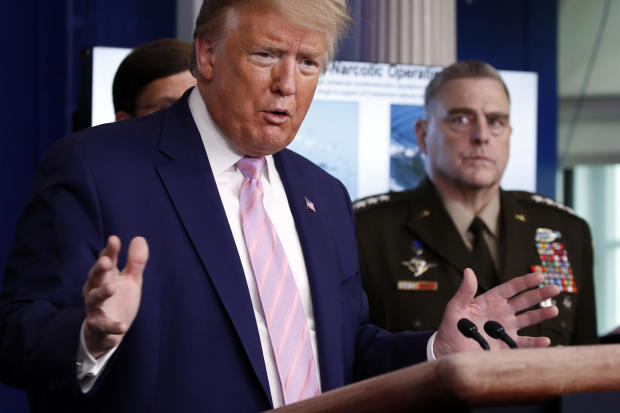Former President Donald Trump’s anger toward a single person appears to have played a key role in evidence leading to his indictment this week.
It all comes down to one person, Gen. Mark A. Milley, chairman of the Joint Chiefs of Staff, according to multiple sources.
Trump loathed the positive coverage Milley received in the press and in books. In his post-presidency period, Trump fumed about Milley, who seemed to be portrayed as a hero, while he was cast as an insurrectionist. In one story, a July 2021 New Yorker article, journalist Susan Glasser depicted Milley’s efforts in the last days of the Trump administration to keep the president from attacking Iran.
The former president began to talk regularly about Milley in 2021, dismissing him and bringing up stories that made Milley seem unintelligent and untrustworthy, according to sources. They said Trump’s anger about Milley led him to be cavalier about what he said about the general, their interactions and policy decisions. It frustrated some Trump aides who noticed he would veer close to classified material in conversations.
Then, Trump started to do interviews for books.
While Trump didn’t speak to Bob Woodward or me for our book “Peril,” he spoke to many others in 2021 at the same time he was lashing out at Milley in private. These dynamics began to collide as the former president sat down with authors, pulling out documents and memos from the White House to make his points.
Government exhibit
And when people came by to hear Trump talk about his presidency —and often rant about Milley— Trump aides would also record the conversations, in case they ever wanted to contest what was later written.
This practice was followed when ghostwriters for Trump’s former White House chief of staff Mark Meadows stopped by. The audio from that July 2021 conversation at Trump’s club in Bedminster, N.J., includes remarks related to Iran and how to confront it militarily, two people with knowledge of the case said, requesting anonymity because they were not authorized to speak publicly on the matter.
The indictment makes reference to a July 2021 “audio-recorded meeting” with “a writer, a publisher and two members of [Trump’s] staff, none of whom possessed a security clearance,” during which Trump showed them a “plan of attack” prepared for him by “the Defense Department and a senior military official.”
He told them, according to the indictment, “the plan was ‘highly confidential’ and ‘secret'” and added, “‘as president, I could have declassified it,’ and ‘Now I can’t, you know, but this is still a secret.'”
Attorneys for Trump informed the Justice Department that they’ve not been able to locate a classified document related to Iran sought by investigators that was discussed during a recorded meeting, two people with knowledge of the case confirmed to CBS News.
One person said it’s not clear if the document with the “plan of attack” exists, or if Trump was misidentifying something to those assembled for the meeting, but said prosecutors have the tape.
Alex Brandon / AP
Sometimes aides and visitors weren’t even sure if what Trump was talking about on national security or military matters was true or if documents Trump mentioned existed, sources recalled. But Trump seemed to talk a lot about Milley and his own view of what really happened on that front.
Initially, Trump’s boasts and recollections about Milley, decisions and various points of intelligence and policy did not get much of a response. But after the special counsel’s office heard that these chats were recorded, they became key evidence items, giving investigators a glimpse into how and why Trump held onto the documents.
So, what began as an attempt to keep some documents from episodes that frustrated him and Crossfire Hurricane —the code name of the FBI investigation into any links between associates of the 2016 Trump presidential campaign and Russian interference in the election— eventually expanded into countering Milley’s positive public profile and what Trump saw as reputation building by the chairman.
And it’s in the Milley-related exchanges where Trump may have waded into waters that attracted the intense scrutiny of the special counsel, especially if those documents had any markings related to classified sources and methods.
As the special counsel’s investigation picked up speed, the evidence related to the Meadows interactions of both special counsel probes —on the documents and on Jan. 6— quickly became a rich area for prosecutors to mine, according to people familiar with witnesses and questions asked during the grand jury sessions.
Those in Meadows’ orbit were asked about the book project and audio of the July 2021 meeting, as well as about what Meadows knew about both Jan. 6 and the removal of any documents from the White House.
Those close to Trump have been watching the special counsel’s investigation closely, aware of who is going in and out of the grand jury for both cases. Allies of Trump began to notice that Meadows cooperated more than most, recalling that he had given the Jan. 6 House select committee many of his text messages from Jan. 6 and was under intense pressure from the feds.
They also began to notice how quiet the former Trump chief of staff has been —even when they run into him at events. He has been seen at some Capitol Hill activities, but those close to Trump wonder what exactly is happening with him and his former aides, in terms of what Meadows has said about his old boss.

